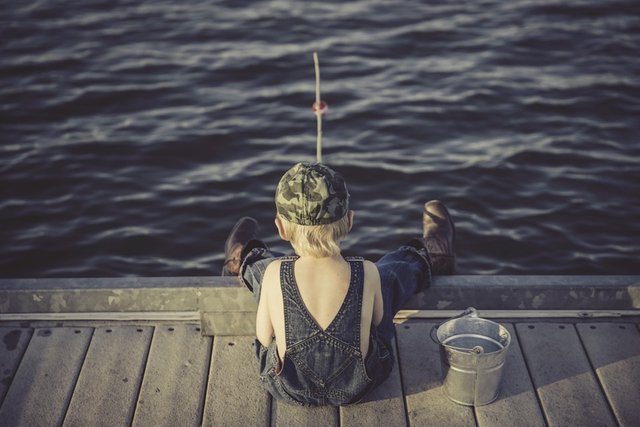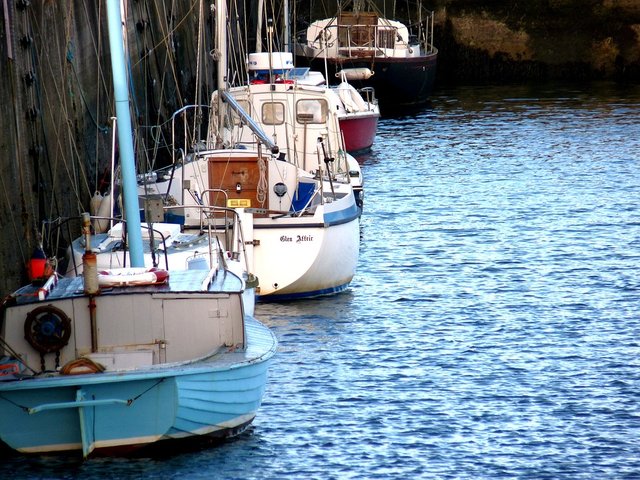
Fishing in bolentino is done by the boat and contains different fishing techniques. It is practiced at a certain distance from the coast, using reed and whirlwind. By means of all the bolentino techniques, they aim at catching preys that are usually found wide, or they are easier to catch on deep seabeds and, finally, to endanger coastal species using a boat.
The main categories of fishing in bolentino are 3:
Depth bolentino
Medium-bottomed Bolentino
Coastal Bolentino
These categories are simply the depth of the bottom on which you fish. Obviously, each technique requires its own equipment, baits and various specific terminals, the only fixed condition is the presence of the boat that must be of good size in case of bolentino of depth or medium seabed to deal with any type of situation. The coastal bolentino, which is practiced very close to the coast, requires a boat, even a small one (in compliance with the safety measures required by law).
The basic concept of this fishery is to set a multiamous terminal on the bottom, triggered with suitable baits and wait for the fish to be eaten followed by the ferrata and the recovery of the prey.
It seems simple but, as in any other technique, you have to use some tricks and use the right equipment.
Where and when
The Bolentino, as we have already said, is practiced from a few meters from the coast, up to the high seabed open sea and this can disorient the fisherman not knowing where to stop to lower the line. The neophyte often tries to throw at random without knowing what prey you are chasing.
Unfortunately for the neophyte, this attitude is unlikely to bring results because, as for other techniques, every detail (weather conditions, bait, trigger) is useful to understand where and how to launch. The complex part is to identify areas where the fish is located but, fortunately, we can rely on two very valid instruments: simple nautical charts and an echosounder.
A fishing trip to Bolentino must be studied at the table carefully examining the nautical chart of the sea area concerned and trying to identify, based on the season and prey that you want to attack, the best areas by planning a possible route among the points identified.
The identification of the best area and the prey that inhabits it are closely linked and it is therefore advisable to know also a shred of the marine fauna that inhabits the chosen stretch of coast.
Rocky bottom
Knowing how to read a nautical chart is essential to understand what you are looking at. On the maps, the letter R (r) indicates the rocky seabed and with the letter P (p) the gravelly seabed, always with the relative beating line indicating its depth.
If it is present at a certain distance from the coast, it may indicate a flat rocky seabed or, if surrounded by deeper battimeters, it may indicate a rock step or dry. In this case, we are faced with a good post.
Possible Prede: Sarago major, Pharaoh, Daisy, Sciaran, grouper, Red Scorphans, Occhioni, Tanute, Murene, Grong, Donzelle, Tordi and other minor preys.
Sandy bottom
It is indicated on the paper by the letter S (s) with the corresponding typing line. Usually the sandy flat seabed does not offer very especially at shallow depths. Things go better on deep sea depths and at certain times it can give good satisfaction.
Possible Prede: Mormore, Triglie, Gallinelle, Solole, Rombi, Passere, Tracine.
muddy bottom
On the chart, it will be marked with the symbol F (f) and the appropriate batting line. Usually it is a flat and uninteresting seabed at shallow depths, while it is more attractive at 70 - 100 meters.
Possible Prede: Sludge Trial, Chicken, Eelweed, Grong, Pagelli, cod, flatfish.
Seabed in Poseidonia
On the chart, it will be marked with the symbol A (a) and the appropriate batting line. Usually it is a flat bottom, covered with Poseidonia algae and shallow, at 35 - 40 meters maximum. Become a good place if dry or rocky areas are present.
Possible Prede: Saraghi e Dentici, Occhiate, Boghe, Sugarelli e Sgombri.
The fishfinder provides a lot of information to the fisherman and, depending on the resolution of the instrument, this information can be more or less precise but extremely useful to the fisherman who must know how to evaluate the possible preys present.
Equipment
Considering the differences in bolentino techniques, it is clear that each variant requires a specific equipment from the boat to the small parts.
Vessel

Depending on the technique you want to practice, the boat to choose also varies. The coastal bolentino is not required to be a particular type of boat provided that it complies with the laws in force and is equipped with a suitable outboard motor or rowing if, in the vicinity of the coast, there are areas with a depth of 15-20 meters. The preferred length is at least 4.5 with a control platform and sufficient aft space.
For the other specialties, it is essential to equip yourself with a boat capable of going offshore, equipped with double motorization, with a cockpit and ready to face the sudden changes of time, since, in some areas, the best places can be even 10-15 miles and more from the nearest port. In addition to the safety equipment, it is essential to have at least one fishfinder and one GPS on board. On board it is useful to have an electric anchor and a 12/24 volt generator that will be used to feed the electric whirlwinds or humpboats, tools indispensable in the depth bolentino.
Reeds
The fishing rod, especially in the depths of Bolentino, plays a fundamental role. It must have the right compromise between robustness and flexibility otherwise, too rigid a gear does not allow to warn the fish's touches, considerably reducing the fun. For the coastal bolentino, telescopic canes from 2 to 5 meters are used with distributed or peak action. The loops must be double-bridge with high strength SIC stone wire gangway, which prevents overheating of the monofilament. Theulin holder is better than screwed, robust and reliable. As power, we can keep up to 80/150 gr.
For the medium-bottomed bolentino (up to 100 mt) the barrel must be strong enough. The length will be between 3 and 4 meters to easily handle the barrel in the presence of long finals and to better keep the mother line away from the boat. They must be fitted with a double deck or pulley cable gangway and must be very durable. For the action we choose a split, with fiber wicker and high modulus, resistant and elastic carbon stem. The screw chuck holder and a comfortable handle must be used both when fishing standing and sitting.
In the bolentino of depth (over 100 meters) it is advisable to equip oneself with specially designed instruments with powerful and resistant pulley loops, high modulus carbon stem and a length of 3 meters are the qualities of a good tool for this specialty.
Reels
Throw on several times a line from a depth of 70-100 meters tired anyone. It is therefore advisable to equip oneself with light, functional tools with a good recovery ratio but also reliable and with a clutch suitable for the most probable preys. It will be decided, in the coastal zone of Bolentino, for fixed or rotating reel whirlwinds of larger sizes with a minimum capacity of 200 metres of monofilament. For the medium bottom and deep depths, it is essential to have an electric reel that has decidedly higher capacities, of at least 400 meters of multifibre and with simple and immediate adjustments, with the possibility of quickly adjusting the clutch load and the depth to be reached.
Monophiles
A real revolution for this technique is represented by multifibre or dyneema. This innovative material comes from the sailing world and is used to sew sails and has a high breaking strength with low diameters and extreme rigidity. For the coastal bolentino, however, it is advisable to use the traditional nylon with diameters ranging from Ø 0.35 to Ø 0.50 for the imbobinamento and from Ø 0.25 to Ø 0.40 for the finals.
For the depth bolentino, the most used line is the multifibre. Unfortunately the cost is high but it allows to use significantly smaller reels, counting on 400-450 meters of capacity with a multifibre of Ø 0.34 with a breaking load of about 18 kg! Another advantage is that such a low diameter offers less current resistance and is therefore less diverted than the other single-wire cables that can be used. Moreover, thanks to its extraordinary rigidity, it allows you to feel touched even at a depth of 150 meters.
Ami
The hook must be robust, sharp and suitable for the baits they use. Measurements must also be adapted to the prey and trigger, reaching measurements 5/0 or higher, in the depth bolentino.
Piombi
The ballast is essential to allow the line to be lowered to the desired depth. Usually, the most commonly used shape is pear-shaped with an integrated swivel to avoid twisting the line. For the size of the ballast, start from 10 gr. up to 150 gr. for the coastal bolentino, up to the kilo of weight and beyond the depth.